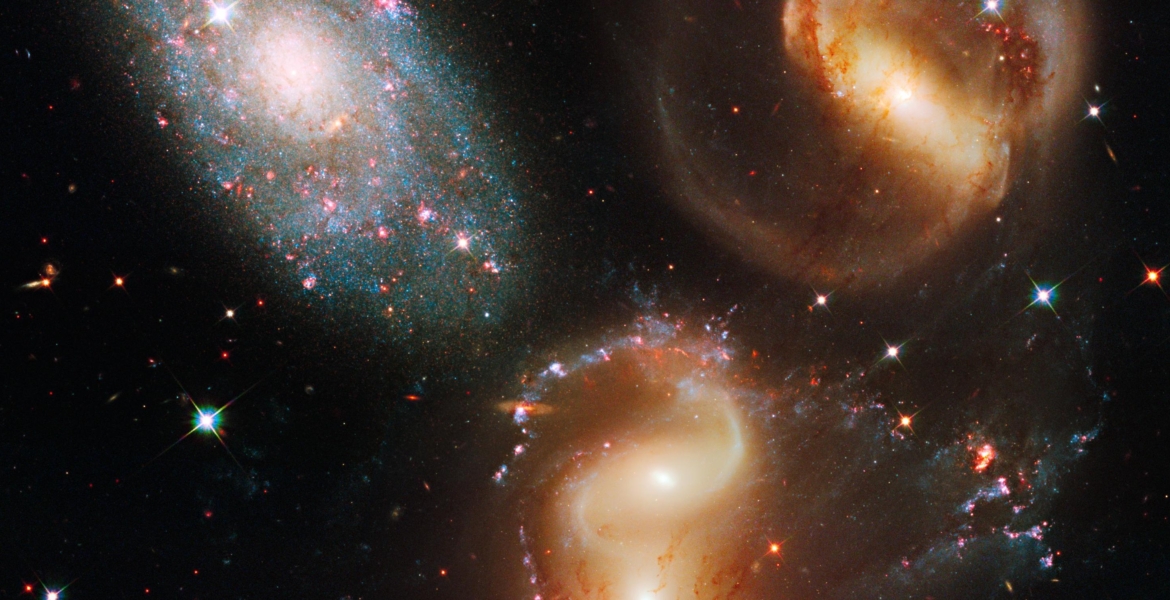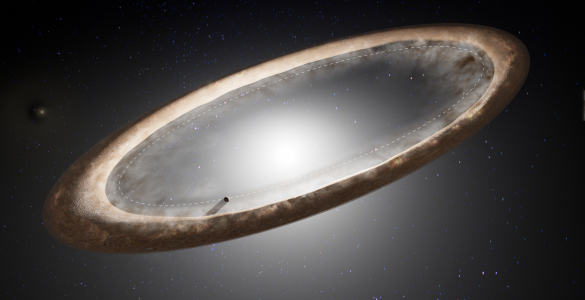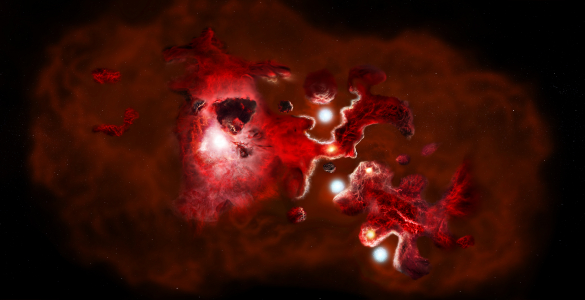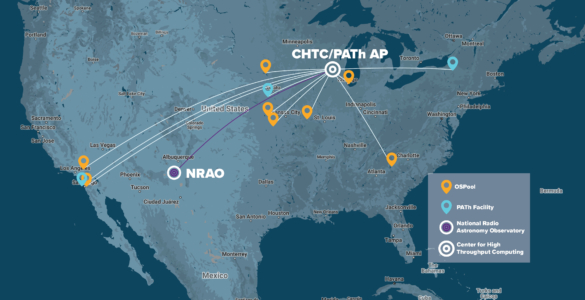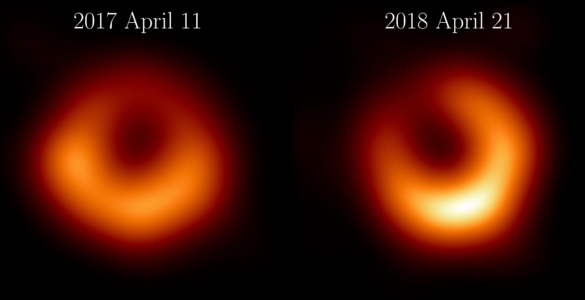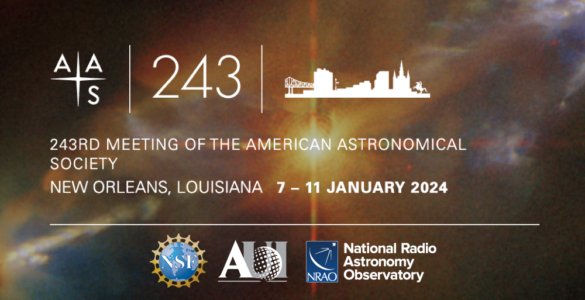In December 2022, astronomers using the Atacama Large Millimeter/submillimeter Array (ALMA) confirmed the discovery of one of the most distant galaxies ever observed. The faint radio light ALMA captured began its journey to us when the universe was less than 360 million years old. It’s a tremendously distant galaxy, but just how far away is it really? The answer is a bit complicated, and it depends on what you mean by distance.
To begin with, astronomers can’t directly measure the distance of galaxies billions of light years away. Instead, they measure what is known as redshift, or z. In this case, the team measured a particular wavelength of light emitted by oxygen known as OIII. When we observe the OIII emission line in a lab here on Earth, it has a wavelength of 88 micrometers. The OIII line ALMA observed in this particular galaxy was much longer, about 1,160 micrometers. Since red light has a longer wavelength than blue light, we say the observed OII line is shifted to the red, or redshifted. Given these two numbers, calculating z is easy. It is just the relative redshift of the observed light, So z = (1160 – 88)/88 = 12.2 The bigger the z, the greater the redshift, and z = 12.2 is the largest confirmed redshift of a galaxy so far.
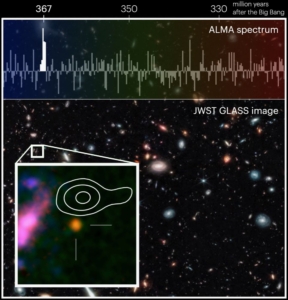
So what does this have to do with distance? There are two ways light from a galaxy can be redshifted. The first is known as the Doppler shift and is caused by the physical motion of a galaxy through space. You’re probably familiar with this effect in sound. When a train speeds past you, its horn sounds higher as the train approaches you and lower as it passes you and rolls away. The sound waves are bunched up as the train moves toward you and have a higher pitch, and they are stretched out as the train moves away from you, thus a lower pitch. The same thing happens with light. If a galaxy is moving toward us its light is blueshifted, and the light is redshifted if it’s moving away from us.
The second way redshift can occur is through cosmic expansion. The universe is expanding, and this means as light travels to us from a distant galaxy its wavelength is stretched out by the expansion of space. The longer the light travels the more the light is stretched, so the more the light is redshifted. This is known as cosmological redshift. For distant galaxies, almost all the redshift we observe is cosmological. This is how we know high redshift galaxies such as this one are very, very far away.
But this still doesn’t tell us the specific distance. To determine that we have to look at how the universe expands over time. Right now there’s a bit of uncertainty about the rate of cosmic expansion, known as the Hubble parameter. The Planck mission observations of the cosmic microwave background put the value at about 68 (km/s)/Mpc, while observations of the Hubble and Gaia spacecraft give it a higher value of about 72 (km/s)/Mpc. The bigger the value, the faster the universe is expanding and the farther away distant galaxies are. If we pick a middle value of 70 (km/s)/Mpc, then we can calculate a reasonable distance using general relativity, but even then our answer will depend on how we define distance.
One definition would be to ask how long the light traveled from the galaxy to us. This is known as the light travel time and turns out to be about 13.1 billion years. Since the universe is about 13.46 billion years old (based on the Hubble parameter we chose), that means the light left the galaxy when the universe was about 360 million years old. This definition is useful for astronomers since distant galaxies tell us about the early universe. It’s more important for astronomers to know a galaxy’s place in history than its distance.
Since the light traveled for 13.1 billion years, does that mean the galaxy is 13.1 billion light-years away? Not quite. Because of cosmic expansion, the light traveled for much longer than it would have if the universe wasn’t expanding. The galaxy was closer to us when the light began its journey. Much closer. If we calculate how far away the galaxy was from us 13.1 billion years ago, we get 2.4 billion light-years. So this galaxy was only 2.4 billion light years away, but the universe expanded so much that its light took 13.1 billion light-years to reach us.
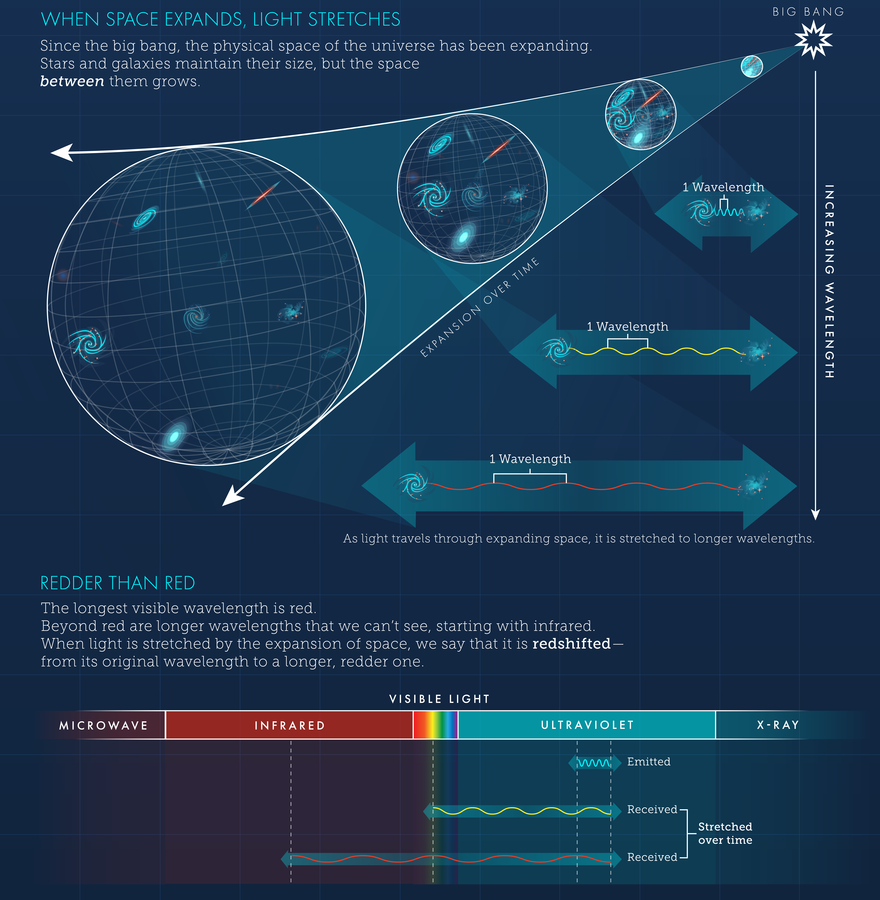
Of course, you probably want to know how far away the galaxy is now. Sure, the galaxy was 2.4 billion light years away, but once the light started heading our way the galaxy continued to move away from us because of the ever-expanding universe. So where is the galaxy now? If you do the math, it turns out the galaxy is now about 32 billion light-years away. But wait a minute? How can we see a galaxy 32 billion light-years away if the universe is less than 14 billion years old? The answer is that we can’t. ALMA’s view of the galaxy is how it looked when it was only 2.4 billion light-years away. We will never be able to see what the galaxy looks like now. It is too far away, and the universe is expanding too quickly for that light to reach us. We only see the optical echo of where it was and how it used to appear.
All of this is strange enough to tie anyone’s brain into a knot. This is why astronomers focus on the redshift z, and why we usually talk about how old the universe was when the galactic light began its journey. That’s enough to tell us that the galaxy is far away and seen from long ago. So long ago and so far away that its distance is hard to define.






